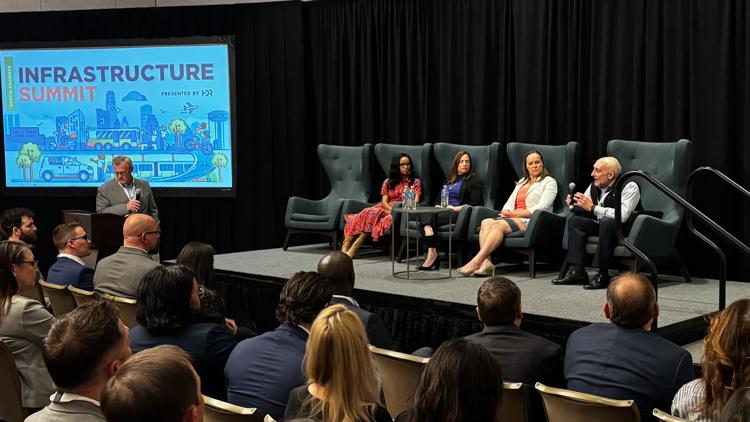AUSTIN, Texas — City leaders and officials gathered on Tuesday for the Austin Chamber’s Infrastructure Summit to discuss the progress and challenges of several transformative projects set to reshape Austin over the next decade. Leaders expressed optimism about managing what they called an “historic” period for the city while acknowledging the growing pains ahead as they prepare for an overlap of several major infrastructure initiatives. This includes light rail development, the Interstate 35 expansion projects, building the new Austin Convention Center and downtown revitalization efforts.
“We're a big international city that has big international needs, and so we need to meet those needs in order to preserve the quality of life and the success,” said Austin Mayor Kirk Watson. Watson acknowledged concerns about the feasibility of these projects, with people wanting to avoid construction, workforce shortages and staying within construction budgets and timelines. However, he assured attendees that city departments are working in close coordination to address these issues.

“Everything is planned out in such a way that we monitor it and make sure it continues to happen,” Watson said, citing the phased expansion of Austin-Bergstrom International Airport as an example. "We're building a new garage, and when we build that garage, it allows us to tear down another garage so that we can then work on the entryway to the terminal." As part of the summit’s keynote discussion, Watson, CEO of Workforce Solutions Tamara Atkinson and Austin Community College Chancellor Russell Lowery-Hart discussed a solution to a lack of workers.
Watson referenced a study the city conducted that showed that Austin didn’t have the workforce to complete the many infrastructure projects it has lined up. He said it has created an opportunity to put people into career paths and train them to be the workforce they need. In collaboration with ACC and Workforce Solutions, the city has created the infrastructure academy , where they are training the next generation of construction workforce to help with major projects across the city.
Transforming Downtown Austin Among the top priorities discussed were projects aimed at transforming Downtown Austin, including the I-35 expansion, a new convention center and revitalization efforts for Sixth Street and the Capitol area. These projects are expected to take much of the next decade to complete. City officials also highlighted the introduction of the "CTX Go App," a platform designed to provide real-time updates on project progress and help residents navigate construction zones.
Light rail: A game-changer for Austin The future of light rail in Austin was a key topic at the summit. Greg Canally, CEO of the Austin Transit Partnership, said Project Connect is moving forward, with designs expected to be finalized by 2026 and construction starting in 2027. Canally described light rail as an "engine" for economic growth, job creation and improved affordability.
Drawing comparisons to light rail systems in Arizona, he said such investments often attract businesses and housing developments near transit hubs while making essential resources like grocery stores and airports more accessible. Jon Hockenyos, a local economist and CEO of TXP Inc., emphasized that light rail would strengthen Austin’s long-term growth.
“A majority of our population lives outside the city limits,” Hockenyos said. “By putting this kind of transportation capacity – this durable investment – inside the city, we’re actually creating the framework for durable growth and values that will stay high over an extended period.” Despite its potential benefits, Project Connect has faced public scrutiny over funding challenges and rising costs.
Leaders acknowledged these concerns but reiterated their commitment to delivering a system that meets Austin’s growing transportation needs. A decade of change Austin is positioning itself as a national leader in infrastructure development as these projects overlap in scale and scope. Watson said he believes these projects will ultimately enhance quality of life for residents while supporting Austin’s rapid growth.
“We’re in a position that if we manage our success well, we’ll come out of even some tough economic times well. If nothing else, having an historic amount of infrastructure projects and preparing to put those infrastructure projects into play, that will be a real boon to our economy,” Watson said..
Politics

Austin leaders optimistic about decade-long infrastructure transformation

Among the top priorities discussed at the Austin Chamber's Infrastructure Summit included the I-35 expansion, the new convention center and Project Connect.















